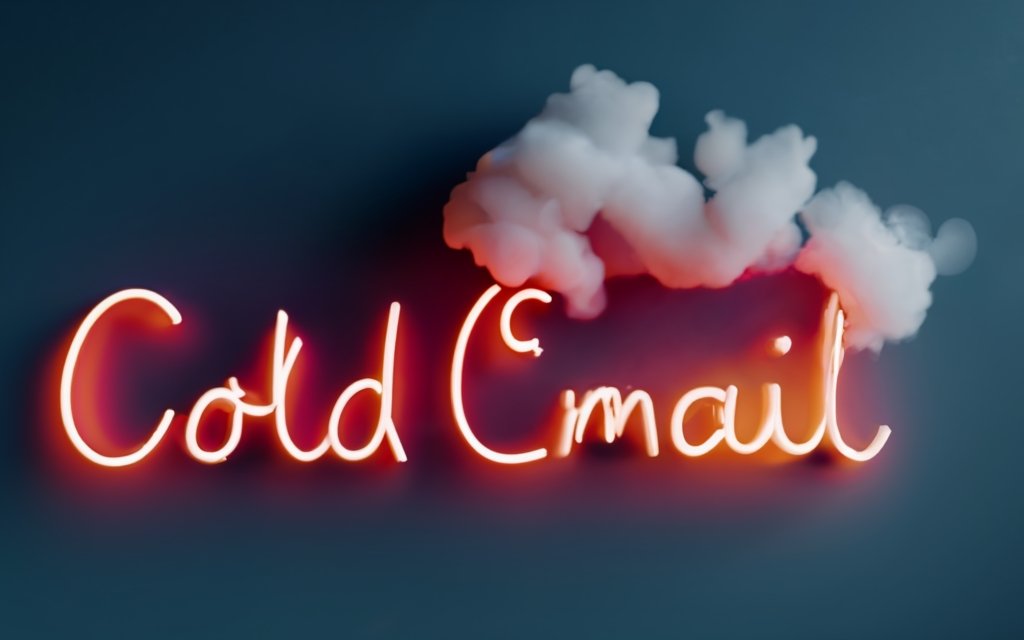Sending effective cold emails in bulk without hitting the spam folder or getting blacklisted is an art. Do it right, and your campaigns will convert customers like clockwork. Do it wrong, and you’ll kill deliverability before even getting started.
In this complete guide, we’ll explore the proven best practices for sending mass cold emails that recipients actually want and look forward to receiving. You’ll learn tactics for smart list management, writing compelling copy, automation tools to streamline workflows, and continually optimizing performance.
With the right approach, you can scale personalized cold email outreach sustainably over time – across new markets and verticals. So stop spamming and start converting with this in-depth blueprint.
Why Bulk Emails Get Blacklisted and How to Avoid It
Sending bulk cold emails can be an extremely effective way to generate new leads and sales opportunities. But it also carries risks – if you don’t follow proper email deliverability best practices, your messages may end up blocked or sent straight to the spam folder.
Getting blacklisted or labeled as spam can completely torpedo your cold email campaigns. So how does it happen, and more importantly, how can you avoid it?
Why Bulk Email Gets Flagged as Spam
There are a few key reasons why bulk email sends may get flagged as spam:
- Sending from a new or untrustworthy IP address – If you’re sending bulk email from a brand new IP, email providers will be suspicious. There’s no reputational data attached to your IP, so you’ll need to gradually build up trust.
- Sudden increase in volume – A huge spike in outbound email volume can look like spam, even if you were previously sending smaller amounts without issue. Ramp up gradually as you build deliverability.
- Spammy content – Using misleading subject lines, deceptive content, or “too good to be true” offers will get you flagged faster. Keep your content professional.
- Your users mark your emails as spam – If enough of your recipients report your messages as spam, email providers will eventually block you. Make sure your content is valuable to avoid this.
- Sending to old, inactive emails – Attempting to email addresses that haven’t been used in years signals to providers that your list is low-quality. Keep your lists up-to-date and segmented.
As you can see, both the content and volume of emails matter when it comes to avoiding the spam folder. Next, let’s explore some strategies to maintain your sender reputation.
Warm Up Your IP Address and Domain
One of the best ways to avoid issues sending bulk email is to gradually “warm up” your IP address, domain, and email account. Here are some tips:
- Start by sending just 10-50 emails per day from a brand new IP. Slowly increase this volume by 5-10% daily.
- Warm up for at least 2-4 weeks before sending larger volumes. This builds your IP’s positive reputation.
- Use dedicated warmup services to safely build up your IP – they provide access to specialized warmup pools.
- Build your domain’s authority by creating social media profiles, a website, and other branding assets.
Taking a slow, steady approach allows you to carefully monitor deliverability at each stage. If you see email bounce rates or spam complaints rising rapidly, you can pull back on volume before causing lasting damage.
Pre-Segment Your Contact List
Flooding recipients with irrelevant, overly-promotional emails is a surefire way to get reported as spam. That’s why you should always split your master contact list into targeted segments or groups.
For cold email, group contacts together that are more likely to share interests, pain points, or priorities. Here are some common ways to segment B2B cold email lists:
- Industry or niche (SaaS, healthcare, finance, etc)
- Company size
- Job title or role
- Location
Other advanced segmentation approaches include:
- Technographic data (tech stacks used)
- Firmographic data (revenue size, growth rate)
- Behavioral data (site/content activity)
While it takes more effort up front, proper segmentation allows you to personalize and tailor content to each group. This results in higher open and response rates over the long-term.
Remove Inactive Email Addresses
Here’s one fact that surprises many cold emailers – even sending to email addresses that were once valid but are now inactive or defunct can harm your sender rating.
Why? Because inevitably a portion of these dormant emails will bounce or reject your message. And receiving mail servers pay attention to your overall bounce rate.
Regularly run your contact lists through a verification/validation service to flag:
- Hard bounces – accounts that no longer exist.
- Soft bounces – accounts with temporary issues.
- Spam traps – fake accounts used to identify spammers.
Removing hard bounces and spam traps ensures your emails only reach real, active inboxes. This helps maximize deliverability.
Send at an Appropriate Frequency
Finally, the cadence and frequency at which you send cold emails also impacts spam likelihood. Sending too many messages in a short window raises red flags.
Here are some best practices to follow:
- Limit emails to 2-4 per week per recipient when first starting out.
- Gradually increase frequency as recipients engage or convert.
- Set frequency caps in your email tool to prevent over-emailing.
- Use lead scoring to identify hot leads wanting more contact.
- Monitor unsubscribe and complaint rates.
While every situation is unique, keeping your initial email frequency modest prevents oversaturation. You can always maximize frequency later once you have an established relationship.
In short
Avoiding the bulk email blacklist takes work – special tools, constant list maintenance, patience in ramping up volume gradually. But it’s absolutely essential to prevent your cold email profits and productivity from getting undermined.
Following the tips above, regularly monitoring key metrics like bounce rate, and optimizing based on data, you can keep your sender reputation high. That ultimately means more of your cold emails reaching the inbox and converting into sales.
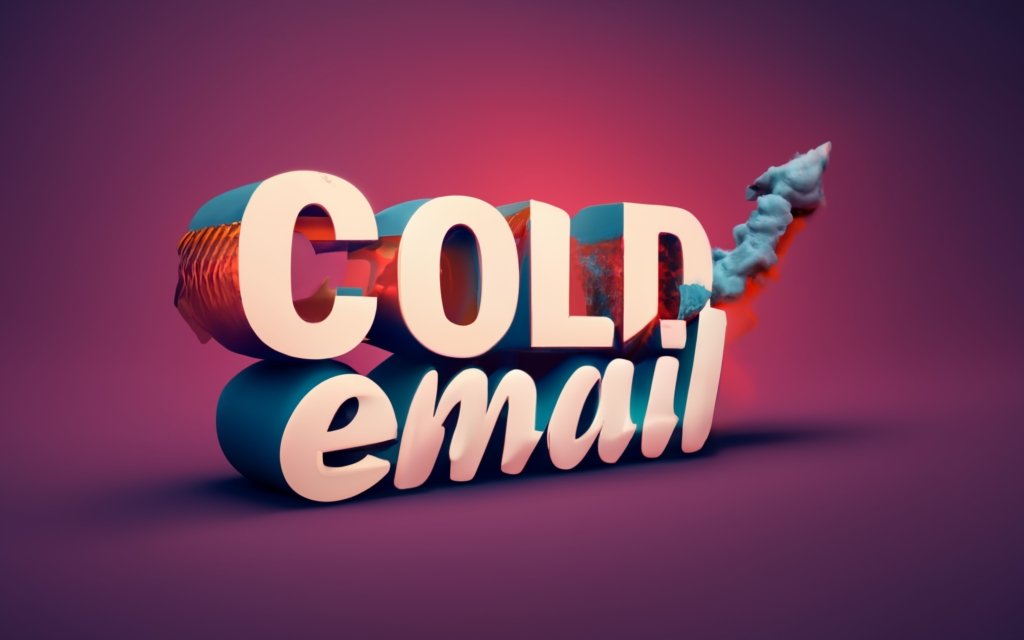
Creating Cold Emails That Won’t Get You Blacklisted
Crafting effective cold emails is an art form. You need compelling content to capture attention fast. But you also need to carefully avoid common spam triggers that could get your emails blocked.
In this section, we’ll explore best practices for writing cold emails that skip the spam folder and land straight in the recipient’s inbox.
Craft Relatable, Truthful Subject Lines
Your subject line is the first impression your cold email makes. And if it raises red flags, recipients will delete rather than open.
Here are some tips for crafting subject lines that boost open rates:
- Relatable and conversational – Subjects that feel human perform better.
- Clear value – Communicate the value you’re offering upfront.
- Relevant and personalized – Include the company name or specifics.
- Truthful – Avoid hype, clickbait or misleading words.
Also keep these Subject line spam triggers in mind:
✘ ALL CAPS, excessive punctuation!!!!!
✘ Unsubstantiated claims – “Act Now Before It’s Too Late!”
✘ Deceptive offers – “Earn $10k/week working from home”
✘ Mismatched content – Subject doesn’t match body
Taking a subtle, benefit-focused approach wins over more potential customers. Remember, be clear on your value, but don’t overhype it.
Keep Your Content Focused and Personalized
The body content of your cold email must grab attention quickly and maintain focus. Do not ramble or overwhelm the reader.
Follow these tips for writing email body copy that converts:
- Conversational tone and natural language. Avoid overly salesy.
- Lead with the value proposition and quickly explain how you can help.
- Include social proof, testimonials, or case studies to build credibility.
- Use visuals like images, charts, or tables to illustrate your message.
- Personalize with specific details on the prospect’s pain points or situation.
- Only highlight the most compelling features or benefits. Don’t info dump.
- Make scanning easy with short paragraphs, subheaders, and bolding.
Taking this focused, value-driven approach prevents your emails from being seen as promotional spam.
Structure Your Emails for Easy Scanning
Here’s an eye-tracking fact that will change how you write cold emails – most people don’t read word-for-word. Instead, they scan for chunks of information.
With this in mind, structure your email content for easy visual scanning:
- Use short paragraphs of just 1-3 lines.
- Add subheaders so readers can jump between sections.
- Bold key phrases, stats, or value statements.
- Include bulleted or numbered lists when appropriate.
- Break up long blocks of text with images.
- Make critical info prominent by moving higher up.
- Finish sections with a summary sentence of the key takeaways.
Optimizing the structure and formatting makes your emails easy to quickly digest and acts as a spam deterrent.
Mind the Size of Images You Attach
Inserting visuals into your cold emails can boost engagement. But improperly sized images can also get you flagged as spam.
Follow these best practices when including images:
- For header images, keep file size under 100KB.
- For content images, aim for under 500KB.
- Save images in commonly supported formats like JPG, PNG or GIF.
- Use compression tools to reduce image file sizes if needed.
- Host images on reputable sites vs attaching directly.
- Ensure a proper image alt text description.
Additionally, disable image loading by default, allowing recipients to load selectively. With a bit of care, images can add tremendous value without harming deliverability.
Make Your Call to Action Clear and Actionable
Every cold email needs a strong call to action – otherwise, what’s the point? Craft your CTA with these criteria in mind:
- Appealing offer – Discount, exclusive content, free trial, etc.
- Easy next step – Simple click or short URL to follow.
- Sense of urgency – Limited-time offer or scarcity element.
- Value reinforcement – Quick summary of the benefits.
- Prominent placement – Higher up and well highlighted.
- Singular focus – One CTA per email works best.
Additionally, avoid using spammy CTA language like “Act Now!” or “Buy from us!”. Your offer should motivate readers by providing value rather than aggressive demands.
Bringing It All Together
Great cold email copy is a balancing act. You need compelling content but can’t go overboard on the sales pitch. The best approach is leading with value, leaning on social proof, personalizing your message, and guiding the reader clearly toward your CTA.
Mastering professional, polished copy that informs and relates to your reader – while avoiding spam triggers – will get your response rates rising in no time. Not to mention keeping your sender reputation intact so your emails reliably hit the inbox.
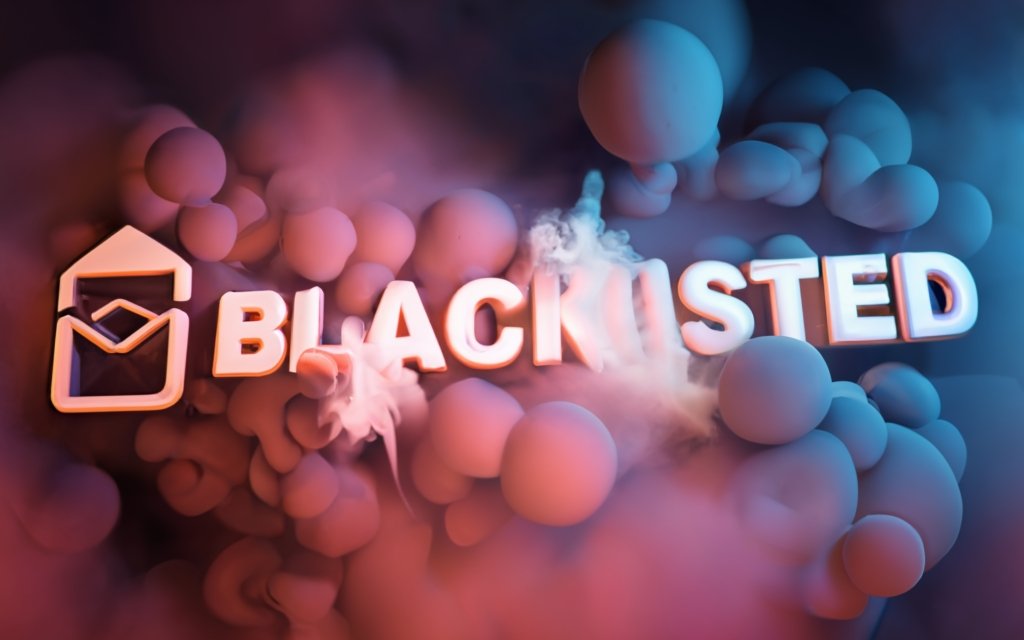
Key Components of Effective Bulk Cold Outreach
Executing a successful bulk cold email campaign requires careful planning and preparation. You can’t just blast out untargeted spam and expect results.
In this section, we’ll explore several key ingredients that set great bulk outreach efforts apart from mediocre ones. Master these and your cold emails will convert.
Research Your Target’s Pain Points
Did you know cold emails have around a 2% average open rate? Pretty dismal.
But you can double, triple or even 10X that open rate with a simple technique – researching your prospects’ pain points.
Here’s why pain point research is so powerful:
- It reveals how your offer is a solution for them specifically.
- You can directly address their struggles in your content.
- Your emails become highly personalized and relevant.
- Readers see you understand their world and needs.
So where do you uncover those pain points? A few techniques:
- Browe through groups/communities your targets join. Look for common complaints or issues discussed.
- Check online reviews of competitors. Discover frequent product criticisms.
- Ask existing customers during onboarding surveys. Learn why they sought your solution.
- Monitor prospect social media feeds. Identify challenges mentioned.
- Interview sales reps who deal with prospects daily. Ask what objections they hear.
That qualitative pain point research sets you up to really resonate with cold leads.
Personalize Emails with Specific Details
Speaking of personalization – the most effective cold emails feature plenty of personalized details. This shows recipients you’re genuinely interested in their situation.
Things you can personalize on include:
- Their company name, industry, location.
- Pain points or challenges specific to them.
- Features or solutions suited to their needs.
- Bonuses, discounts or offers tailored for them.
- Next steps aligned with their priorities.
- Content and messaging that fits their role or title.
- Links to resources likely to interest them.
- Customer testimonials from similar businesses.
- References to current events impacting them.
These small but personalized details really catch eyes when skimming through inboxes full of generic spam. The extra effort pays off in more opens and responses.
Provide Value Through Content
People engage most with cold emails that provide value rather than just pitch offers. So make generously sharing value a cornerstone of your outreach.
Some ways to add value:
- Send an industry report, eBook, whitepaper or checklist.
- Highlight a specific feature that addresses a common pain point.
- Offer a free trial or discounted first purchase.
- Provide a roadmap showing how you’ll guide them to success.
- Answer a frequently asked question with helpful advice.
- Give away access to tools, templates or other resources.
- Alert them to recent news relevant to their role.
- Congratulate them on a promotion, new funding round, etc.
When recipients clearly gain something from opening your email, response rates rise. Lead with value instead of demands.
Use Proper Email Etiquette
As a bulk cold emailer, you’re constantly at risk of being perceived as just another annoying sales person. Set yourself apart by mastering cold email etiquette best practices:
- Brief, specific subject lines. Avoid hype or urgency.
- Warm openers with a personalized greeting.
- Conversational tone focused on their needs.
- Carefully targeted contact lists. No spamming everyone.
- Relevant, non-promotional content providing value.
- Clear next steps and calls to action. Don’t demand a sale.
- Easy opt-out in every email. Don’t force unsubscribes.
- Reasonable send frequency and volume per contact.
- Quickly addressing spam complaints and removing bad addresses.
- Thanking non-interested recipients for their time when they decline.
These Relationship focused gains you trust as a reliable resource vs just another spammer to be ignored.
Bringing It Together
Effective cold email outreach requires work – research, personalization, valuable content, meticulous etiquette. But combining these techniques can generate game changing open and response rates.
Set yourself apart from spammy carpet bombers by doing your homework on prospects, tailoring your messages, leading with value, and developing relationships. This balance makes your outreach welcome rather than a nuisance.

Leveraging Automation Tools for Your Bulk Campaigns
Executing highly personalized and targeted bulk cold email campaigns takes significant manual effort. But don’t worry – there are many automation tools available to streamline the process for you.
In this section, we’ll explore five key ways that automation can maximize the effectiveness of your bulk cold outreach.
Use Specialized Warmup Tools to Improve Deliverability
As discussed earlier, properly warming up brand new IP addresses and domains is crucial for deliverability. But manually sending progressively increasing volumes of test emails can take weeks or months.
That’s where warmup automation tools come in. Services like Mailshake, Mixmax, and Maildrive offer advanced warmup capabilities that can prepare a new sender’s domain and IP for bulk sending much faster.
Here’s how warmup services work:
- Access a dedicated pool of specialized warmup email addresses.
- Automatically send progressively increasing volumes of emails.
- Tools monitor deliverability at each stage, optimizing the pace.
- Warmup graduates your IP/domain for your target volume.
- All without having to manually send emails yourself.
Warmup tools automate the meticulous process down to a simple progress bar. Get up and running reliably faster.
Leverage Segmentation and Personalization
Crafting personalized emails is proven to boost engagement but doesn’t scale when sending cold emails manually. This is where segmentation and personalization engines come in.
Tools like Mailchimp, Outreach, and Mailshake include powerful features like:
- Saved segments and groups for one-click targeting.
- Personalized fields to dynamically insert prospect details.
- Conditional content to show/hide elements based on traits.
- Subject line and content A/B testing.
- Batch personalization using CSVs and integrations.
This allows you to take a template approach while still maintaining that human touch recipients love. Automated personalization saves huge amounts of time while optimizing responses.
A/B Test Different Approaches
One limitation of manual cold email is that testing and optimizing different approaches takes forever. But automated A/B testing tools allow you to experiment rapidly.
For example, you can A/B test:
- Different subject lines, calls to action, or offers.
- Rearranged content sections.
- Short vs long copy styles.
- High vs low urgency language.
- Email frequency and timing.
Automated A/B tests run in the background, learning which variations perform best over time. You see the results and winning variants automatically rise to the top.
Build Sequences for Personalized Follow-Up
What happens after someone opens or clicks your initial cold email? Don’t drop the ball by leaving the conversation there.
Automated sequences handle timely, consistent follow-up at scale. For example:
- Send content offers to non-openers after a few days to restart engagement.
- Follow up quickly with targeted content when someone does open.
- Send a sequence of value-rich emails to warm up closers.
- Auto-enroll opened emails into relevant drips.
- Follow up on meeting requests to book the calendar slot.
Well-crafted sequences feel like natural conversations vs robotic spam. They move recipients smoothly through your conversion funnel based on their actions.
Track Performance and Optimize Campaigns
The final advantage of automation tools for cold email is the detailed tracking and analytics they offer. You get visibility into:
- Open, click, and reply rates for each campaign and variation.
- Conversion rates from first contact to closed deal.
- Insights into your best performing segments and approaches.
- Email activity time tracking to optimize send times.
- Real-time notifications when prospects convert or reply.
These insights allow you to fine-tune messaging, segments, follow-ups, and campaigns to maximize the ROI from your cold outreach. Automated optimization is a game changer.
Get More from Your Bulk Emails with Automation
Executing cold email manually worked well when prospect volumes were low. But as your business grows, automation is essential to scale while keeping messages relevant.
Leverage the power of automation to build effective sequences, surface insights, send more personalized copy, and optimize performance. Your prospect pipeline will thank you.
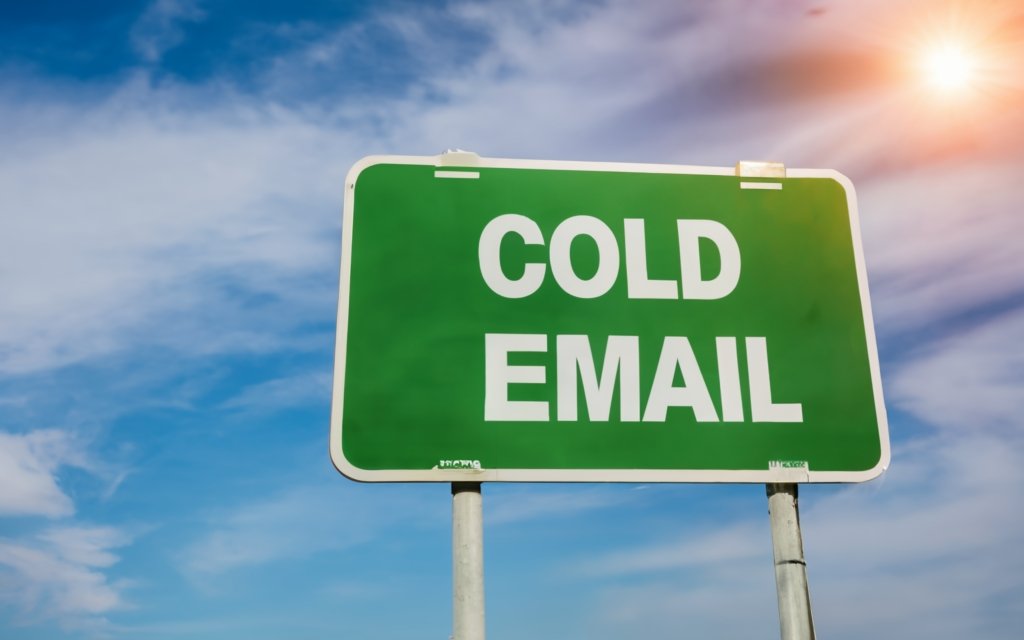
Continually Monitoring and Optimizing Your Cold Emails
Launching a successful first cold email campaign is a great milestone. But the work doesn’t stop there – you need to continually monitor your campaigns and make optimizations.
Keeping a close eye on performance metrics and fine-tuning based on the data is crucial for list health and deliverability.
Here are some key areas to monitor and optimize ongoing.
Watch Out for Spam Trigger Signals
It’s inevitable that some of your cold outreach emails will get marked as spam, especially when you’re just getting started. Don’t take it personally – just use it as an opportunity to strengthen your approach.
Watch out for these common spam trigger signals:
- Sudden spikes in bounce rates
- Clusters of spam button clicks from a domain
- Canspam report notices of compliance violations
- ISP feedback loops indicating your sending is flagged
- Significant volume of messages going to spam folder
- Email open and response rates dropping noticeably
The moment you notice 1-2 spam flags, investigate immediately and adjust your campaign volumes or content. Nipping issues in the bud protects your sender score.
Fine Tune Your Content Based on Engagement
Planning your content and messaging upfront is important. But don’t get overly rigid – be nimble and optimize based on data.
Notice certain topics, offers or calls to action resonating more than others? Double down on those in future emails.
See subject lines with emotional hooks performing best? Adapt that style across your campaigns.
Find emails getting deleted after being opened? Work on refining your preview text.
Regularly review open rates, clicks, deletions, and spam marks across messages. Then refine content that moves the needle on conversions.
Adjust Volume and Frequency Based on Response
When launching cold campaigns, start cautiously with email volume and frequency. Monitor engagement closely, then adapt your approach:
- Increase daily send volume if open rates remain strong.
- Pull back if spam complaints pop up; send less frequent emails.
- Watch for decreasing open rates as a sign of over-emailing.
- Send more frequent followup to engaged prospects.
- Reduce frequency for non-responsive contacts slowly over time.
Let recipient reactions dictate how aggressively you broadcast. Don’t blindly max out email limits if less is performing better.
Update Inactive Email Addresses
Be disciplined about list management. Continually run your contacts through validation checks to remove:
- Hard bounces – non-existent email accounts.
- Soft bounces – accounts with temporary issues.
- Spam traps – fake emails used to catch spammers.
- Unsubscribes – non-interested prospects.
Segment out underperforming groups avoiding next campaigns.
Keep your list lean and active for maximum deliverability. Don’t jeopardize sender score emailing the dead.
Maintain Your Sender Reputation
Finally, don’t lose sight of the long-term. If your domains, IPs, or accounts get blacklisted, recovering takes months.
- Monitor blacklistings and spam folder rates.
- Keep compliant with anti-spam regulations.
- Avoid risky buying email lists of unknown quality.
- Use dedicated warmup IPs to protect your business IPs.
- Engage recipients to build trust over time.
Defending your sender reputation ensures you can keep campaigns running optimally for the long haul.
Optimize Smarter Cold Email Campaigns Over Time
The first email send is just the beginning. Set your bulk cold outreach up for long-term success by continually tracking and optimizing based on data and engagement.
Small tweaks to messaging, segmentation, timing and list management compound over time into major performance gains. Adopt a test and learn approach as you master this nuanced channel.

Scaling Your Cold Email Outreach Over Time
Once you’ve honed an effective cold email approach, you’ll likely want to scale up your outreach. Whether your goal is to grow within your existing market or expand into new verticals, scale requires planning.
In this section, we’ll explore some smart ways to systematically scale up your cold email volumes and results over time.
Gradually Increase Volume as You Build Trust
We’ve said it multiple times now but it bears repeating – slow and steady wins the deliverability race. Exercise patience in scaling up your email volumes.
For established domains with good sender reputations, aim for volume increases of 10-20% per week. For newer senders and IPs, scale up emails by just 5-10% weekly.
These modest increases give mail providers time to assess deliverability at each new level before getting overwhelmed. Keep a close eye for any upswings in spam complaints or bouncing.
Also, don’t abruptly stop/start emailing. Dramatic fluctuations look suspicious and trigger spam filters. Build trust with consistency.
Expand Into New Markets or Verticals
Once you’ve maxed out effective volume for your initial target customer niche, consider expanding into complementary markets.
For example, a SaaS startup selling to small legal firms could scale by also targeting:
- Small accounting firms
- HR consultancies
- Insurance brokers
- And other professional services
Moving into adjacent verticals allows you to replicate your successful cold email model across new customer bases. Just make sure you research each market’s unique pain points and customize messaging appropriately.
Automate More Processes to Save Time
We’ve already covered the many automation tools available to streamline cold email activities. Double down on removing manual work as you scale.
Consider automating processes like:
- Research and lead list building
- Contact data importing/updating
- List cleansing and spam trap checks
- Segmenting and tagging records
- Warmup sequences to increase deliverability
- Follow-up and onboarding sequences
- Re-engagement campaigns for non-responders
Automation shifts your focus from tedious tasks to strategy, creativity and optimizing for performance.
Test New Cold Email Strategies
As you reach new potential customers, their sensibilities and preferences may differ from your original targets.
Use A/B testing automation tools to experiment with adjustments like:
- Subject line styles and copy
- Content topics, offers, and formats
- Emotional hooks and sentiment
- Call-to-action wording
- Follow up sequence design
- Timing and send frequency
Seeing which variants make each new market engage can significantly boost your scaling. Adapt your approach.
Monitor Data and Continually Optimize
Finally, don’t take your eye off the analytics and metrics as you scale. Closely monitoring performance indicators allows you to catch issues early before they become catastrophic.
Watch key metrics across verticals like:
- Email open, click, and response rates
- Spam and complaint rates
- Contact list bounce rates
- Unsubscribe and opt-out rates
- Sales qualified lead rates
- Actual customer conversion rates
Continually optimizing based on the data minimizes growing pains as your cold email engine expands. Scale deliberately.
Keep Momentum Going with Smart Scaling
Rome wasn’t built in a day, and neither is a cold email empire. Patience, discipline and optimization are required to scale your outreach sustainably over months and years.
But with the right foundation and a methodical approach, your cold email flywheel can deliver breakthrough growth across multiple markets. Onward!
FAQs About Sending Bulk Cold Emails
Cold emailing done right can achieve incredible results. But there are also plenty of nuances and best practices to be aware of.
Let’s explore answers to some frequently asked questions about optimizing and scaling bulk cold email campaigns.
What Volume of Emails Will Trigger Blacklisting?
There isn’t one magic number that suddenly causes accounts to be blacklisted. Lots of factors impact deliverability.
That said, sending thousands of emails daily from a brand new domain or IP will almost certainly run into issues. Begin with just a few hundred emails per day and scale up slowly.
Monitor critical metrics at each stage:
- Spam complaint rates over 2% often lead to blacklists.
- Bounce rates topping 5% jeopardize deliverability.
- Unsubscribe and abuse reports also hurt sender rating.
Adjust volume down if any of these signals spike early on. Play it safe at first.
How Often Should You Email to Avoid Spam Filters?
When making initial contact, limit emails to 2-3 touchpoints per week with each prospect. Sending more frequently looks like aggressive spamming.
Once recipients engage with your content or convert to leads, you can gradually increase frequency over time. But even for established relationships, daily emails often backfire.
Let recipient reactions dictate ideal frequency. See conversions increasing after 7 touches? Send new prospects 7 emails over 2 weeks. Notice engagement drops after 4 emails? Reduce to just 3.
There is no one-size-fits-all cadence – monitor and adapt based on response.
What Makes an Email Appear Like Spam?
Both email content and sending patterns impact spam likelihood. Avoid these red flags:
- Aggressive subject lines full of hype or ALL CAPS
- Mismatched content not related to subject
- Overly sales-focused copy rather than value
- Unsubstantiate claims like “Earn millions working from home!”
- Grammatical errors or inconsistent branding
- Sending large volumes from new domains/IPs
- Emailing purchased lists with bad quality scores
Scrutinize your copy, branding, volume approach, list quality and engagement levels. Small issues aggregate into deliverability woes.
How Do You Build Trust as a New Sender?
Gaining inbox placement as an unknown sender takes work. Some key trust building tips:
- Warm up IP reputations starting with low volumes.
- Ensure complete branding and compliance on websites/social pages.
- Publish address and contact details visibly.
- Include postal addresses in email footers.
- Respond promptly and completely to abuse reports.
- Monitor and optimize based on spam button feedback.
- Slowly grow volume as you demonstrate quality over time.
- Leverage sender reputation services to highlight compliance. DELIVERability is earned through meticulous reputation building.
What’s the Best Way to Segment a Large List?
Carefully dividing your master list into targeted segments boosts conversions and minimizes spam risk.
Some proven approaches to segmentation include:
- By subscriber demographics like job title, industry, seniority.
- Based on psychographic data like pain points, use cases, goals.
- According to technographic traits like technologies used.
- By engagement metrics such as open rates, links clicked.
- Based on customer lifecycle stage.
- By lead score if you have a scoring model.
- By location details like country, state, city.
Take time to research and analyze your list for patterns. The more precisely you can define audience groups, the better.
Other Relevant Questions
How fast can I scale up my cold email volumes?
For new domains and IPs, increase sends by just 5-10% each week. Monitor metrics closely before further increasing volume. More established senders can scale a bit quicker at 10-20% weekly volume increases.
What tools do you recommend for email warming?
Look into services like Mailshake, Mixmax, and Maildrive. They provide access to dedicated warmup IP pools and automated progressively increasing email sending.
What is an acceptable cold email spam complaint rate?
Aim to keep spam complaints below 2%. Anything higher risks blacklists. Adjust your content and volume if rates exceed 1-2%.
How often should you re-email non-responders?
Wait at least 2 weeks before the first re-engagement attempt. Then space additional attempts every 2-4 weeks for non-responders. But remove hard bounces promptly.
What should you do if blacklisted?
Act quickly to understand the cause, then adhere to guidelines for removal. This may include reducing volume, adjusting content, proving compliance, or switching IPs/domains. Expect it to take 1-2 months to delist.
What metrics should you track?
Monitor bounce rates, spam button clicks, opens, clicks, unsubscribes, conversions, and spam folder rates across campaigns. Use this data to continuously optimize.
What tools can help with automation?
Leverage automation capabilities in tools like Mailshake, Outreach, Mailchimp, and Lemlist. Focus on automating lead research, segmentation, warming, follow-ups, re-engagement, and analytics.
Keep Optimizing Your Cold Emails
As we’ve covered, mastering cold email outreach takes research, testing and fine-tuning. But staying vigilant on metrics and trends pays off in deliverability, open rates and conversions.
Keep scrutinizing recipient reactions, volumes, frequencies, content and tools. Allow data to guide your optimization path – and reach inbox nirvana.
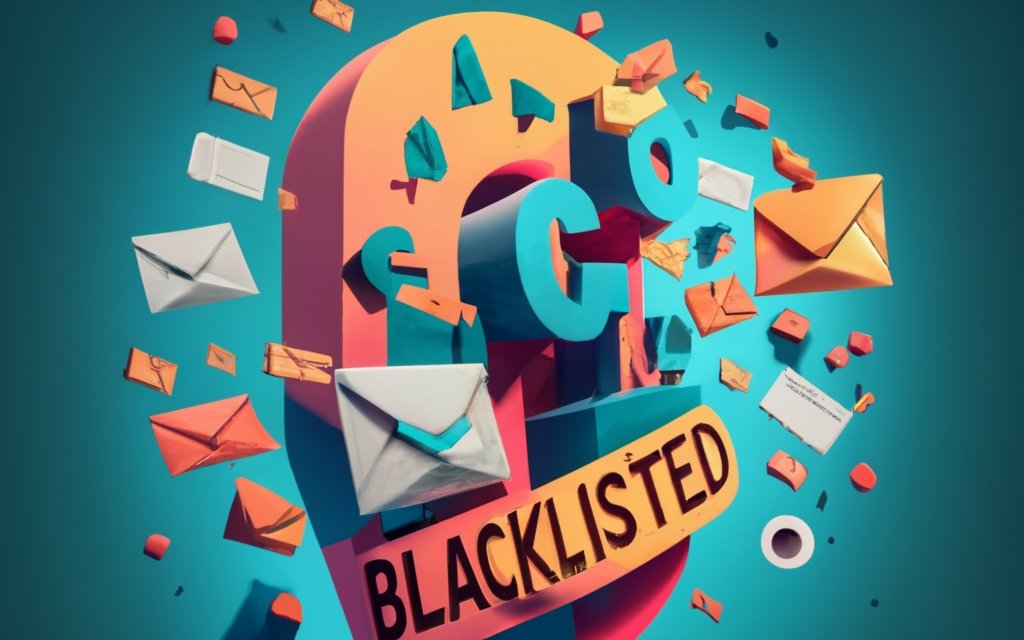
Key Takeaways – Sending Bulk Cold Emails Without Blacklists
Bulk cold email remains one of the most effective channels for lead generation. But only if you do it right!
Here are the key lessons for running a successful bulk cold email campaign that hits the inbox:
- Warm up new IP addresses gradually to build reputational trust over weeks.
- Pre-segment your list into targeted groups for maximum relevance.
- Craft subject lines focused on value vs hype; avoid spam triggers.
- Personalize email content with research into prospects’ pain points.
- Structure emails for easy skimming – short paragraphs, bolding, etc.
- Send modest volumes initially and increase steadily as engagement allows.
- Monitor metrics like spam complaints; optimize and course correct quickly.
- Automate follow-ups and campaigns as you scale to save time.
- Continually refine copy and campaigns based on performance data.
- Defend your domain’s sender score – it takes months to rebuild once damaged.
The best approach combines patience, personalization, value-focus, and automation. Avoid the common beginner mistake of spamming aggressively. Deliverability is earned over time by carefully building inbox trust.
Master the nuances, monitor engagement closely, and keep refining. With a thoughtful plan, your bulk cold email will convert customers reliably for the long-haul.

